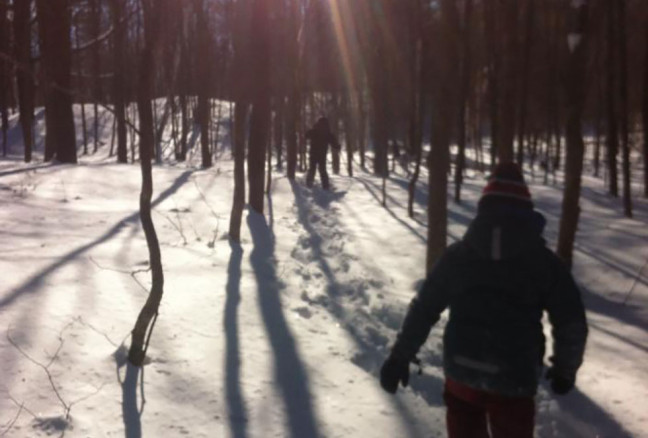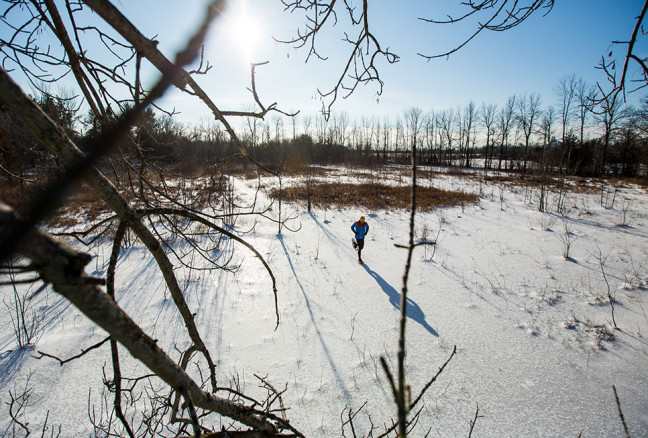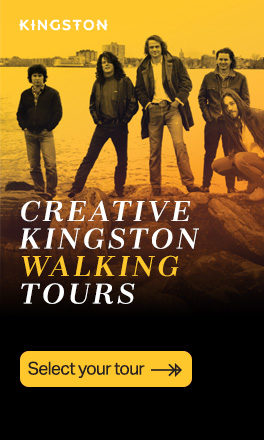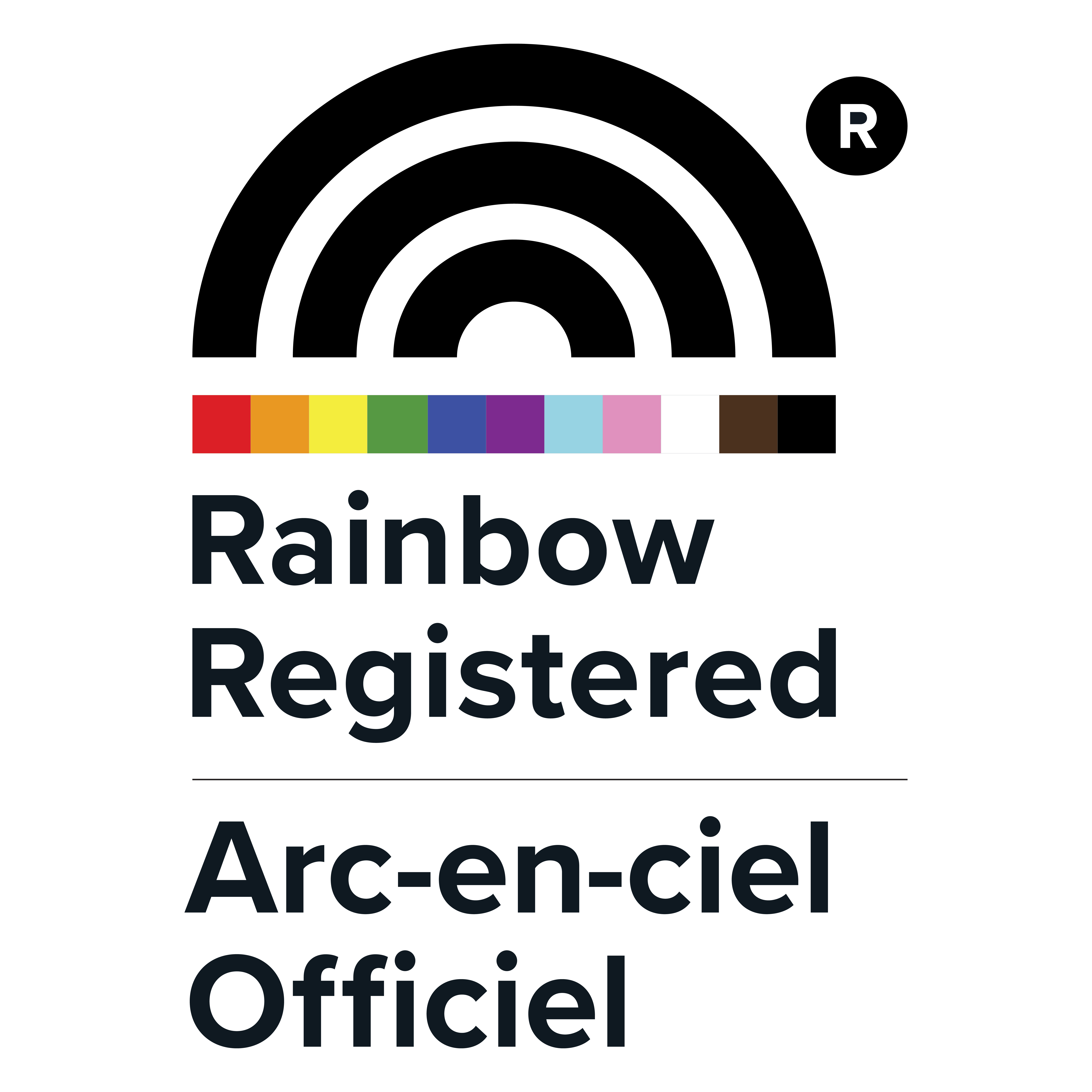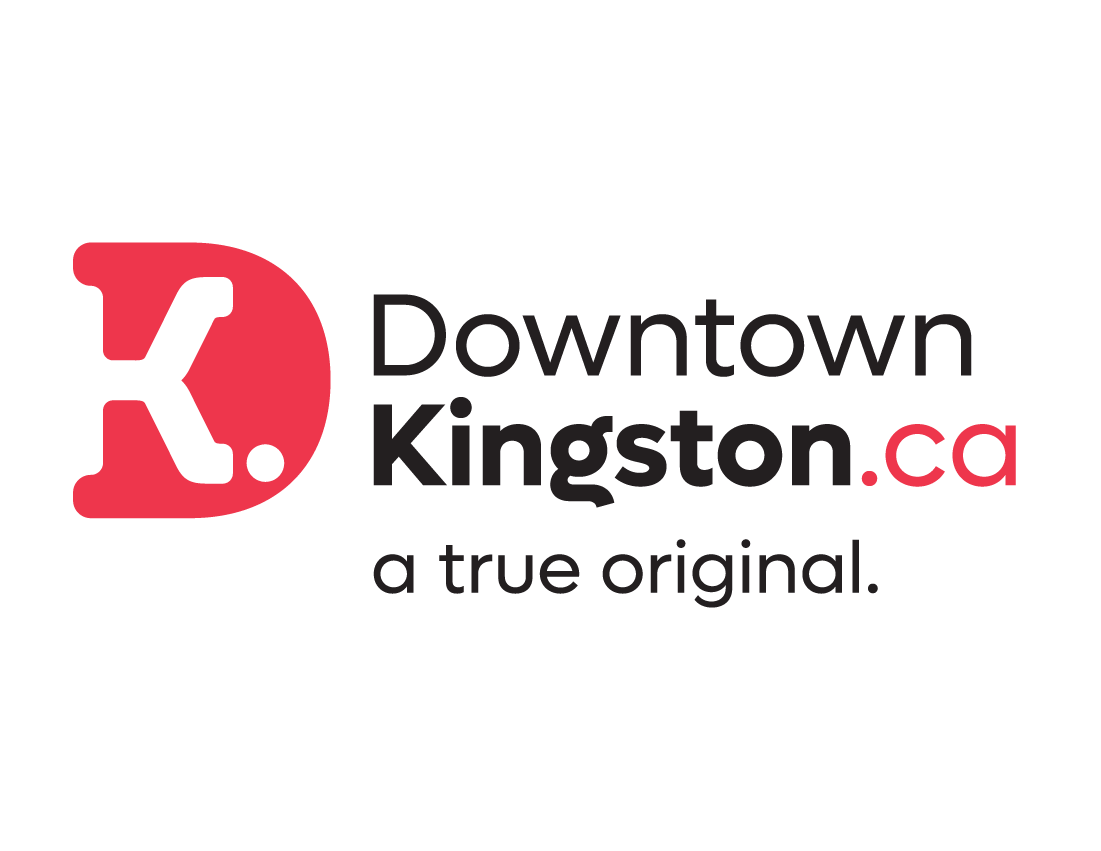We all knew it would come, it always does. And while many of us enjoyed the mild start to winter (my Facebook feed was littered with friends still riding bikes, driving with the windows down, and paddling over Christmas break – I even had one friend who went for a swim on Christmas Day!) I think I speak for many when I say we are all (secretly) excited that snow has arrived.
My son went out to the shed this morning to retrieve his snowshoes, as his class had plans to snowshoe around the school yard. I asked him to pull my own as well… I’m off today, and I’ve been anxious to strap my snowshoes onto my new winter boots.
Traditionally made of wood that was heated by steam or soaking and formed into round (or oval-like) shapes, snowshoes date back thousands of years (even before the invention of the wheel!). Sinew or rawhide was used to create a latticework between the frame (so that snow would not accumulate on the shoe) and the user’s foot (boot) was then tied to the snowshoe. Snowshoes allowed our ancestors to “float” over the snow to explore and find food in the winter.
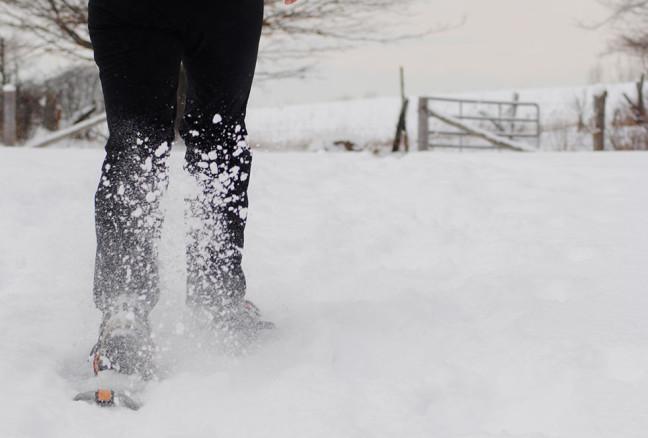
The modern snowshoe sees the wood replaced with lightweight aluminum, and the rawhide has been replaced with plastic. The harness (where your boot goes) has the ability to tighten around a variety of different sized feet, and many snowshoes are now also equipped with crampons; often stainless steel “teeth” built into the bottom to offer traction, especially on hilly terrain or icy conditions. Snowshoes come in a variety of sizes (determined based on your weight) and for different purposes!
Snowshoeing is a popular sport that is easy for just about anyone (if you can walk you can snowshoe!). I’m happy to share with you some of my favourite spaces to explore:
- Cataraqui Conservation Authority boasts a few conservation areas in the Kingston area: Little Cataraqui Creek offers hourly snowshoe rentals, and many easy trails ranging from about 2km to 7km in length. Lemoine Point is right in town and on a bus route, and offers a large field to try out deeper snowy conditions, as well as an 11km trail system. Further out of town, head to Gould Lake, for some backcountry experiences.
- Frontenac Provincial Park: For a real wilderness experience, head north of town to explore backcountry trails, offering a variety of lengths and difficulty. There are also a few winter workshops available at the park’s visitor centre.
- Concerned about heading out on your own? Trailhead offers guided evening snowshoe hikes (the full moon night treks fill up fast!), and the fee includes use of snowshoes, guide and a treat by the campfire. They also rent snowshoes by the day.
- A new area has recently popped up, that I’m excited to share with you! MTB Kingston, our local mountain bike club, is opening up their trails for winter use. Offering a network of trails (including groomed trails for classic and skate skiing, AND fat biking!) this is an area close to town, but truly feels “off the grid”. Membership fees to apply, and you can visit their website for details.
- If you’re a runner and would like to try out a sport that’s growing in popularity, snowshoe running, Spafford Health & Adventure offers clinics/coaching and a popular race series for you to experience!
I hope you take some time to strap on some snowshoes this winter, I promise you’ll love it!
